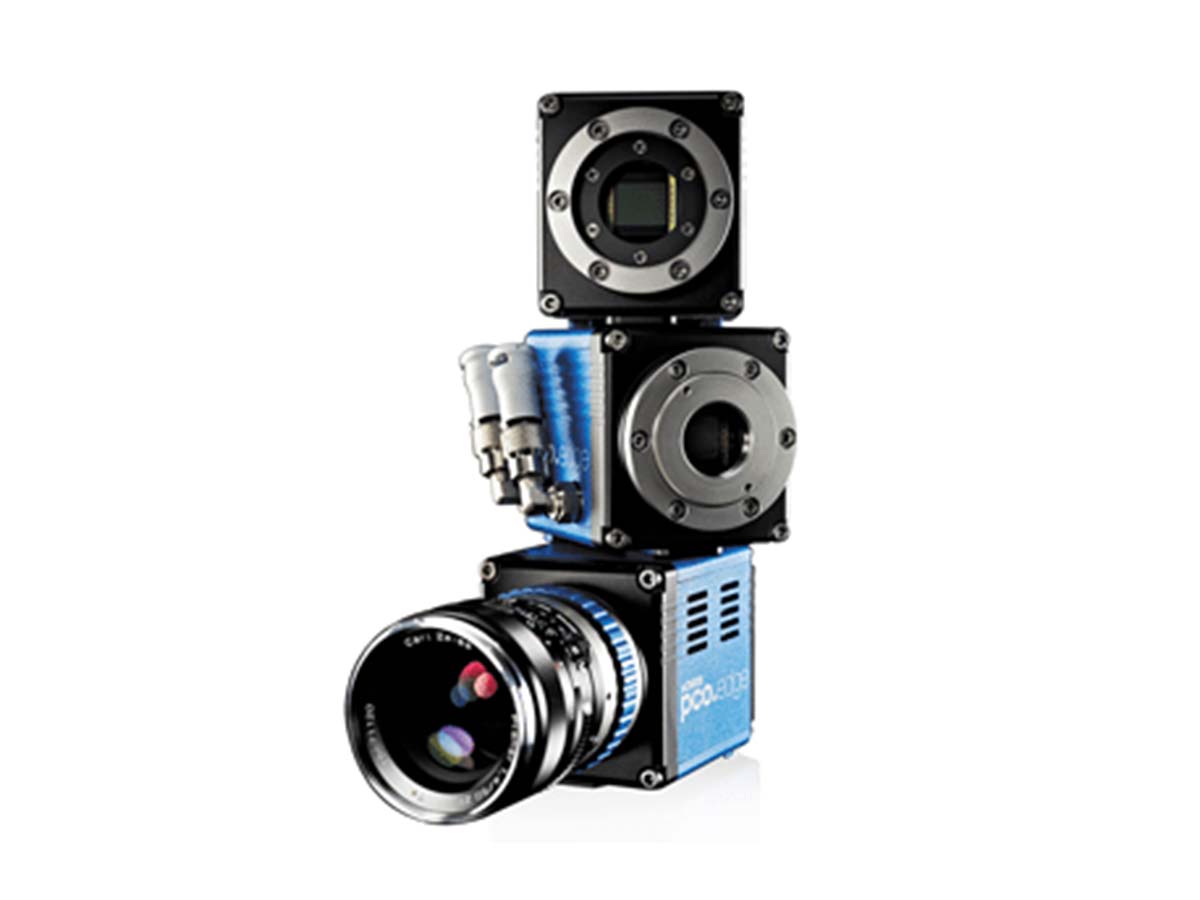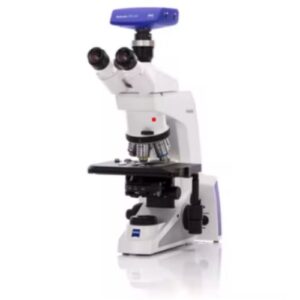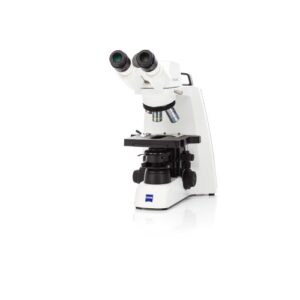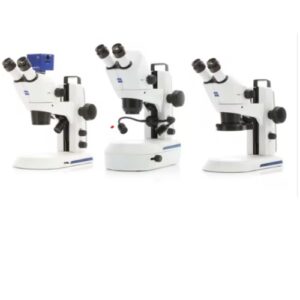Scientific CMOS cameras: Arch rivals to CCD or partners in crime?
When building a microscope system, there are many important components to consider, such as the microscope stand, objective lenses, and contrast methods. However, increasingly software and cameras are playing a critical role in the design of new microscope systems. At the forefront of this paradigm shift are the many new university faculty members setting up new labs, making decisions that will affect the next several years of their research projects. Therefore, considering the investment required for a quality camera and software package, it is imperative to get the decision right – the first time.
While every point in time has new technology to consider, the decision facing new investigators regarding fluorescence microscope cameras has never had two such strongly opposing forces as it does today. Researchers are accustomed to opposing technology for color and monochrome fluorescence microscope cameras, but now there is a dramatic difference in fluorescence microscope cameras – Charge Coupled Device (CCD) vs. scientific complementary metal oxide semiconductor (sCMOS).
In the past, the difference was cooling, length of exposure, and resolution. Today, the decision includes frame rate, noise, resolution, bit depth, gain, binning, dynamic range, and quantum efficiency. These many variables can make even the most tech-savvy scientist’s head spin. When considering a microscope system, new investigators can feel the tension between the two technologies. Adding to the pressure is the sense that one is buying “old” technology if choosing a CCD microscope camera instead of the newer sCMOS – but are they really opposing forces where sCMOS will replace CCD for monochrome fluorescence cameras? Or are they two independent technologies that work together to cover the wide range for fluorescence microscopy applications?
Applications that determine the sCMOS or CCD microscope camera
High speed
When looking for pure speed, it’s hard to find a camera for fluorescence imaging that beats sCMOS. There are some electron multiplying CCD (EMCCD) cameras that with region of interest (ROI), binning, and unreasonable clock and clearing settings that can challenge the raw speed of the sCMOS camera, but at 100 FPS full frame and 25,000 FPS or higher with ROI, the sCMOS camera is king of speed. By contrast, CCD sensors are slow – most topping out around 100-150 FPS with ROI and binning. So not only is the camera slower, but to get to the base line speed of sCMOS, the user needs to compromise on resolution and field of view.
Winner: sCMOS
High speed in low light fluorescence
Speed is where the clear victory ends, because when considering frame rates, one must also consider exposure times. So unless your exposure times are on the microsecond time scale, stop dreaming about 25,000 FPS. However, at 10 milliseconds, 100 FPS is at least plausible. Although 10 ms is a very short exposure time for fluorescence, the 16 bit register and 65,536 grey levels means the sensor can produce significant grey levels above background noise. Combined with the lower read noise in sCMOS the user gets more of what they need: pixel data.
The CCD sensor, surprisingly, has some virtuous characteristics that benefit users in low light conditions, most notably analog gain and binning – two features that are unavailable on sCMOS cameras. These two functions, although they amplify noise and reduce resolution, provide the user with the ability to amplify signal by multiplying the electrons produced by the sensor and create “super pixels” – effectively increasing the sensitivity of the sensor. These two functions, combined with a 12-, 14-, or 16-bit digitizer with 4,096, 16,384, or 65,536 grey levels respectively, can amplify signal and get what users need most: pixel data.
Winner: Tie
Multi dimensional live cell
Live cell imaging presents its own challenges, although live cell could require both speed and low light sensitivity, a lot of live cell is slow, time lapse imaging. Long exposure times? Who cares! There are 10 minutes between each image.
As far as field of view, sCMOS has a 50% larger field of view over most fluorescence CCD cameras. This means each position can increase sample size and possibly decrease the number of images required to collect the necessary data. When smaller areas are required, the user can simply add an ROI and create a mosaic image with smaller images, albiet larger than the single image FOV.
Another area for importance is sensitivity (QE), noise, and the resulting signal to noise ratio. Whenever real data is required for image analysis, more signal and less noise is always preferred. With readout noise around 1 electron rms, the sCMOS wins the day compared to readout noise of 6 electrons rms found in the most popular CCD sensors.
Where CCD provides a counter punch is with dark current noise which can range but is normally on the order of 0.0002 electrons/pixel. By contrast, the industry leading Hamamatsu Orca Flash 4 comes in at 0.06 electrons/pixel. This difference is orders of magnitude in favor of the CCD, however, the dark current noise doesn’t present itself until exposure times go out into multiple seconds to minutes of exposure. And really, who wants to wait that long for an image particularly if there are multiple channels, Z stacks, and stitching taking place.
Winner: sCMOS
Deconvolution
Deconvolution requires proper digital imaging sampling rates, pioneered by Harry Nyquist, which is the topic of an article unto itself. However, the good news is that both CCD and sCMOS have an excellent pixel size for proper deconvolution with 63X and 100X lenses.
Most CCD sensors have a 6.45 micron pixel size, sCMOS have a 6.5 micron pixel size – which is perfect. However, CCD sensors produce smaller data sets which when working through the calculation heavy deconvolution algorithms dramatically speed the time to result. Although the larger file size of the sCMOS takes time for deconvolution, the end result is completely stunning. The high resolution 4.2 megapixel image with zero light scatter is simply unbeatable.
Winner: Tie
Mosaic Image Stitching
When capturing a large area with a high magnification, the only method for acquisition is mosaic image stitching. In this application field of view equals speed, and the sCMOS sensor has a 50% larger field of view, which means 50% fewer images and 50% more speed. When a CCD is used in combination with Objective Imaging Surveyor software and Turboscan, the CCD can go faster, but not as fast as the sCMOS and its huge field of view.
Winner: sCMOS
Ratiometric Imaging (FURA and FRET)
When comparing the difference between image 1 and image 2, ratiometric data is only as good as the grey level difference and time in between the two images being compared. One might assume higher frame rates are better, however, frame rates are dictated by the biological process they are measuring. In this case, biology is the neutralizer because FRET and FURA measures fluorescent proteins or calcium dyes, not extremely bright quantum dots. So attributes such as a high bit depth, gain, and binning can be very helpful. However, this needs to be balanced with speed and all of that depends on the experimental biology. In this case, there is no clear winner.
Winner: Tie
Quantitative fluorescence
If you were to ask 10 people involved in biological imaging to explain quantitative fluorescence microscopy you would probably get three or four answers that focused on different concepts. Comparing fluorescence intensity, ratiometric imaging, and photon counting would probably arrive at the top of the list. Your journey through the world of quantitative fluorescence microscopy would begin there and you would embark on a long voyage, for which a camera would naturally be required.
Important characteristics for a quantitative fluorescence microscopy camera would be low read noise, good full well capacity, high dynamic range, and a high bit depth. All of which sCMOS cameras have. For example, the pco.edge 4.2 has a read noise of 0.8 electrons, dynamic range of 37,500:1, full well capacity of 30,000 electrons, and a 16 bit digitizer. By contrast, CCD cameras such as the Hamamatsu Orca R2 have a read noise of 6 electrons, dynamic range of 3,000:1, full well capacity of 18,000 electrons, and two digitizers of 12 and 16 bits. If the numbers look intimidating, sCMOS is bigger, and in this case, bigger is better.
In the case of quantitative fluorescence microscopy, sCMOS is truly the better fit. Ratiometric imaging depends on the biology, so there is no clear winner. If one is interested in photon counting, welcome to the land of EMCCD cameras, where signals are low and camera sensitivity is high.
Once the camera is selected, the method for qualifying fluorescence begins. Expanding on this part of the journey is best left to highly experienced scientists. A great resource for learning more about this method is from the book Quantitative Imaging in Cell Biology: Methods in Cell Biology by Waters and Wittmann.
Good luck on your journey!
Winner: sCMOS
Trust W. Nuhsbaum, Inc.
Choosing a camera can be intimidating, but identifying the needs for the application is the first step in making a smart decision. The second step is to not get caught up in any trend or hype around a specific technology. The differences are clear, but although there is some overlap in technology, both sCMOS and CCD have their place in fluorescence microscopy. So although they oppose each other on occasion, in many situations they compliment each other under the large umbrella of fluorescence microscopy.
The Imaging Specialists at W. Nuhsbaum, Inc have been around long enough to know about where each technology fits and can advise on what is best for your set of applications. Trust the experience of W. Nuhsbuam, Inc to weather the technology winds of change and advise on the proper technology for your experiments.




